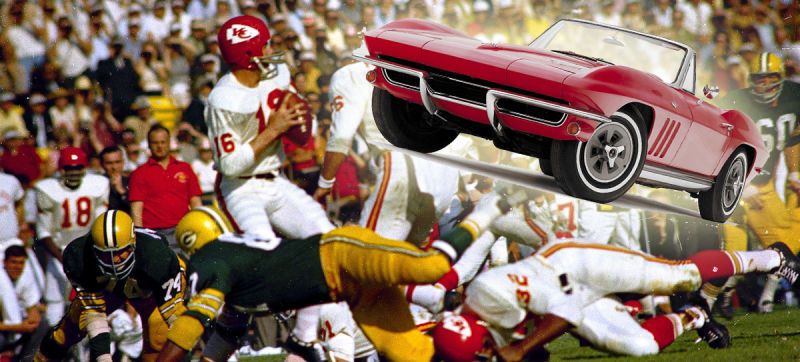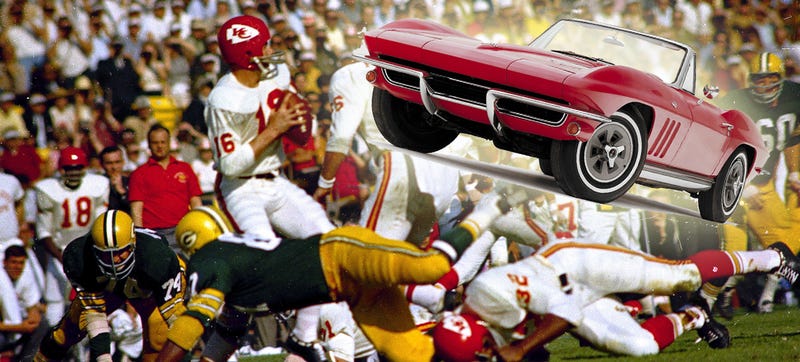
This year is a big one for the Super Bowl. It marks the 50th playing of the game (meaning it’s just a few years older than Broncos starting quarterback Peyton Manning, who breaks a record this year for being old.) A lot of history went down the year of the first Super Bowl, especially in the car industry.
In normal Jalopnik fashion, it’s time to put a spin on Super Bowl anniversary celebrations by discussing the car-related things that went on around the time Super Bowl I occurred in 1967—from the MVP prizes to the automobile industry as a whole, including the reign of General Motors and one lawyer’s ability to slam the iron fist of Congress down on automaker safety standards.
Since it’s only fair, let’s talk about the actual football game first.
Advertisement
The Super Bowl And Super Bowl I: Jan. 15, 1967

At the very first Super Bowl—a game played between the rival leagues of the American Football League and National Football League—the NFL’s Green Bay Packers stomped the Kansas City Chiefs in a 35-to-10 victory at Los Angeles Memorial Coliseum on Jan. 15, 1967.
The winner that year didn’t drive off in a Hyundai back then, obviously; first MVP Bart Starr didn’t even receive a car to go along with his title, which is something we’re used to these days. But the Packers returned for Super Bowl II the following year, and Starr claimed the MVP title once again.
Sponsored
This time, he got a new set of wheels to go along with it. But rather than keeping his new Corvette Stingray, Starr donated it to a youth organization he helped start—the Rawhide Boys Ranch.
Both Starr and his wife had long been committed to at-risk youths. Their own son died of a drug overdose in 1988, leading Starr and his wife to strengthen their advocacy roles. From ESPN:
[Starr and wife, Cherry Starr] became anti-drug advocates and remained committed to the Rawhide Boys Ranch program for at-risk youth in Wisconsin that they helped start in 1965, three years before Starr donated to Rawhide the red Corvette he won as MVP of Super Bowl II.
As for MVP cars in successive Super Bowl events, the prize has an interesting history. General Motors has a bad record with giving away sporting prizes of all kinds in recent years, including recalls on the MVP cars and a lawsuit for failing to deliver Tom Brady’s winning Cadillac Escalade ESV in 2004.
http://jalopnik.com/gms-hilariousl…
Perhaps the Super Bowl MVP most cheated by his prize was Drew Brees in 2010, who happened to win in the one-year break in between Cadillac dropping its promotional sponsorship and Chevrolet picking it up. Brees was probably OK about missing out, though. The GM prizes seemed like a bit of a hassle anyway.
But enough about the Super Bowl. It’s the subject of most conversations this weekend, but we have to do our rightful duty as car people and talk about, you know, cars. With that, let’s explore what the automobile industry looked like during the year of Super Bowl I.
The Automotive Industry In 1967
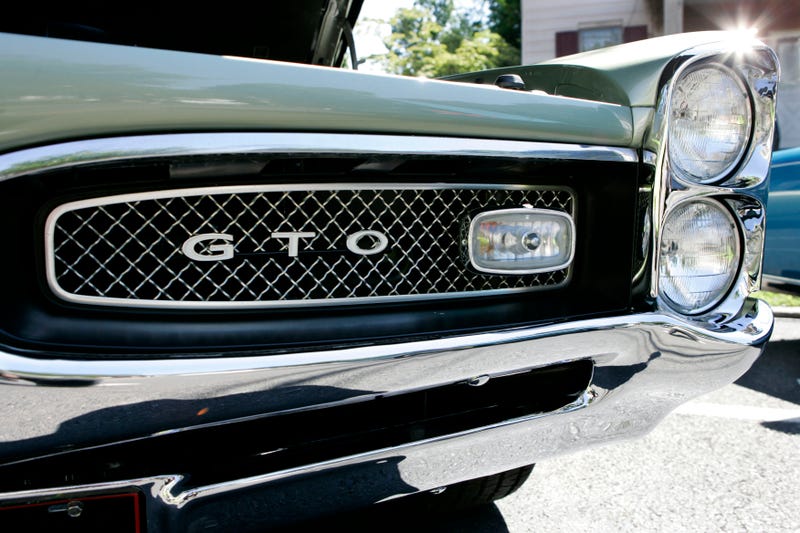
General Motors celebrates popping out cars faster than a Pez dispenser:
If you were to guess what the parking lot of the first Super Bowl looked like, “full of GM cars” would probably be a safe bet.
Just three months after the Packers won the Super Bowl in 1967, GM surpassed the 100-million marker on U.S.-made cars (has your ‘Murican accent ever been stronger?). That occurred less than 60 years after its formation in 1908, and GM held the title of world’s largest automaker at the time.
While the Super Bowl had over 32,000 empty seats at Los Angeles Memorial Coliseum for the game’s opening year, GM spent its time building more seats than it could likely count. From History:
… by its peak in 1962, GM produced 51 percent of all the cars in the U.S. Its 75 millionth U.S.-made car rolled off the assembly line that year, while the 100 millionth car followed in 1967.
Talk about a quick jump. GM, of course, had its struggles in the years to come, as the Super Bowl grew to become nearly sacred to U.S. culture. Now, the two have almost flipped—the automaker fell hard with a bankruptcy and then a safety crisis and millions of recalls, while its automaker competitors flocked to the game to secure one of its eminent advertising slots.
GM is on its way up in recent history, boasting its strongest lineup ever and record profits in 2015. But Wall Street isn’t on board yet, and shares keep on dropping.
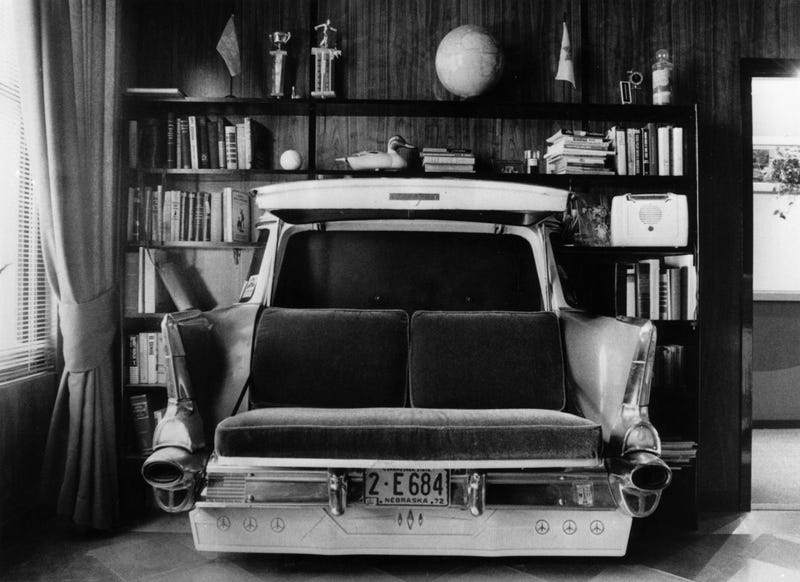
The Little Book That Could:
Lawyer Ralph Nader changed the car world forever in 1965 with the publication of Unsafe at Any Speed: The Designed-In Dangers of the American Automobile targeted U.S. automakers and road fatalities, stating that there was “gap between existing design and attainable safety.”
But the industry fully felt the book’s real effects in 1967, when the U.S. Congress established the National Highway Traffic Safety Agency. Before we get there, let’s go back to its roots.
When the book went to print on Nov. 30, 1965, it did not ease the audience into Nader’s call for making the automobile industry more attentive to the safety of its customers rather than simply selling more cars. From The New York Times:
The first sentence did not mince words: “For over half a century the automobile has brought death, injury and the most inestimable sorrow and deprivation to millions of people.”
The book was a sales hit. Unsafe at Any Speed became a nonfiction bestseller alongside Truman Capote’s In Cold Blood less than six months after Nader published it, according to The New York Times.
Nader researched car safety at Harvard Law School in 1956 and it ultimately led to the writing of a book, according to the Times. Inspired by books that invoked change, Nader drafted chapters and an outline over the next few years. Nader’s work wasn’t a hit with publishers at first, who responded by saying that the book would primarily be of interest to insurance agents.
But it turned out not to be, hence its best-selling title. All of the research that went into the book—and its success—wasn’t good news for manufacturers, though. The book sparked the modern concept of auto safety and regulations to ensure its presence on the cars people buy, even if it came at the expense of the Chevrolet Corvair—perhaps unfairly.
Back to 1967, our Super Bowl year. That year Congress established NHTSA, which takes responsibility “for reducing deaths, injuries and economic losses resulting from motor vehicle crashes.” The move came a year after the book influenced passage of the National Traffic and Motor Vehicle Safety Act, giving government the power to issue manufacturer safety standards and require recalls if need be.
Today, after getting caught completely off guard by GM’s ignition switch safety scandal, NHTSA is an agency that shows its teeth more than ever—even if American traffic deaths seem to be suspiciously on the rise again.
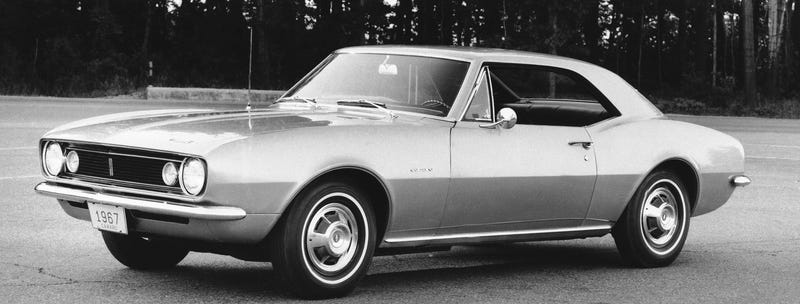
First major restyle of Ford Mustang, introduction of Chevrolet Camaro:
And for those into style points to go along with the safety, Ford Motor Company came out with the first major refresh of its Mustang for the 1967 model year. (We even have a wallpaper of the car, if you’re a fan.)
The update was due in part by the heavily competitive car industry at the time, in which the Mustang faced direct competition from the Dodge Charger, the new Chevrolet Camaro and the car widely considered to have kickstarted the muscle-car era at its 1964 inception, the Pontiac GTO.
As for its differences from the previous Mustang, perhaps a couple of the most notable changes for the 1967 model were in size. Ford added added two inches in length and nearly three in width to the new car, making it truly “bigger and better” than the last.
It had to be as it sought to duke it out with the then-new Camaro. From Car And Driver:
While there had been notions advanced for producing a “Super Nova” of sorts before the Mustang debuted, it wasn’t until the Mustang was a proven hit in August of 1964 that the go-ahead was given to rush a comparable car into production. That’s a fully developed car in Chevy showrooms by the fall of 1966—barely more than two years.
The American muscle car game seems to be doing pretty decent 50 years later.
Those original cars made their marks on the car industry, just as Super Bowl I made its mark on the sporting world. So, whether you spend the day traveling on the open road or sitting at home in front of the TV, just remember that the year 1967 had a big effect on your Super Bowl Sunday routine—and your drive today.
Photo credit: AP Photo, AP Photo/File, AP Photo/Mel Evans, Keystone/Stringer/Getty Images, AP Photo
Contact the author at alanis.king@jalopnik.com.

